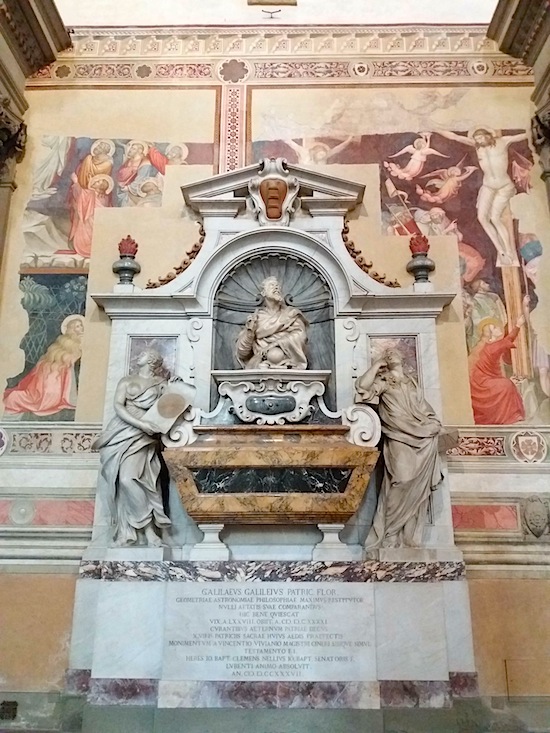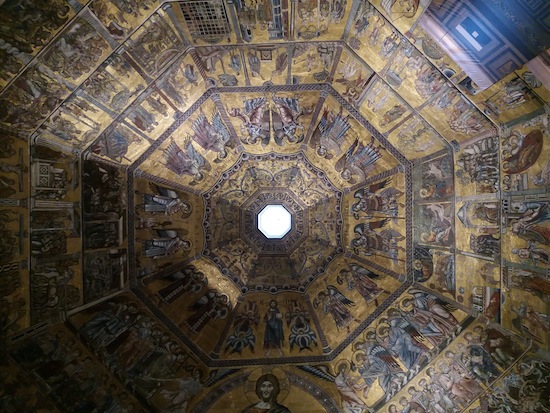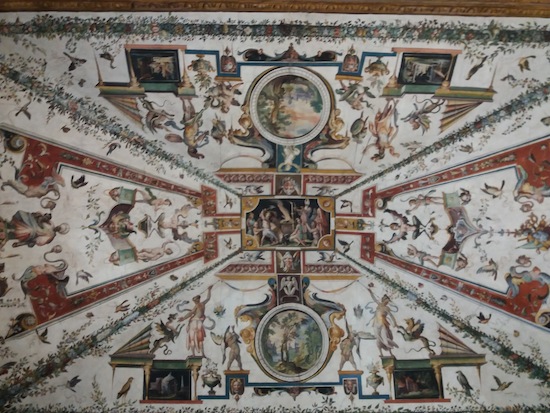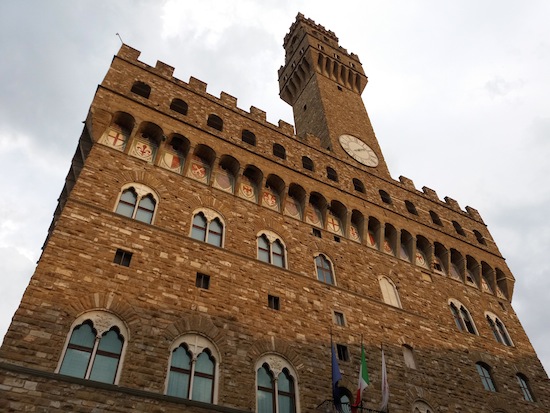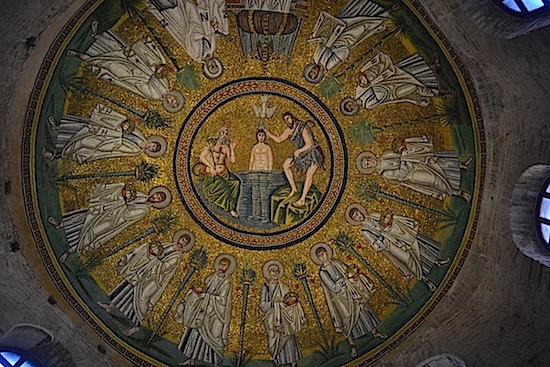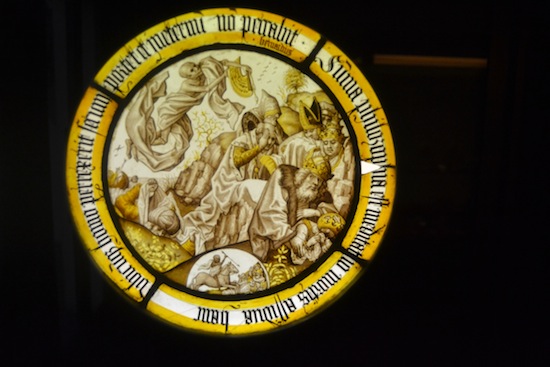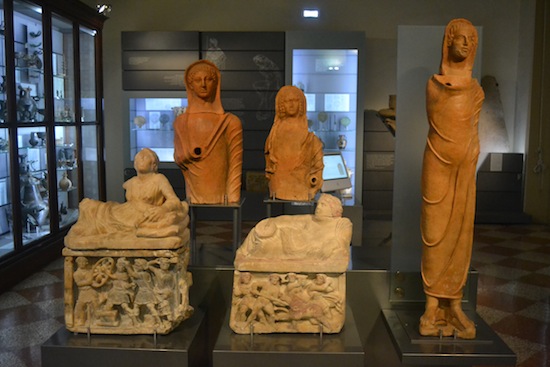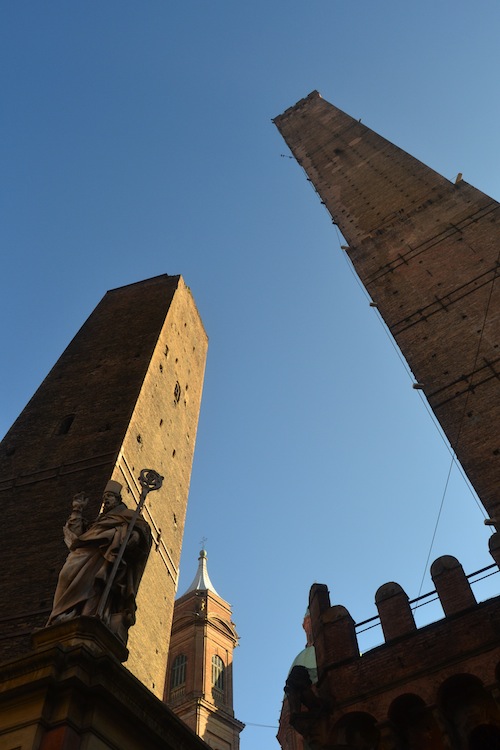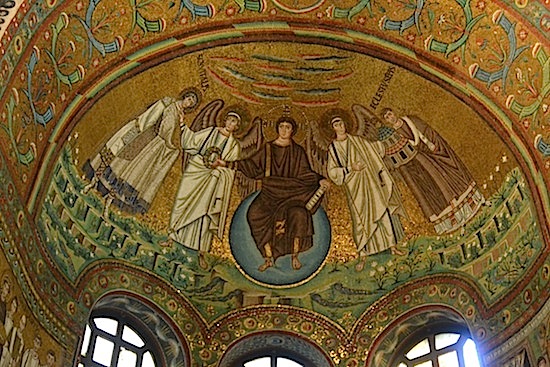
The apse dome of the Basilica of San Vitale shows Christ
enthroned, and looking very much like a Byzantine emperor
I’ve been posting a lot lately about my recent trip to Italy. The high point of the trip for me, indeed the travel high point of the year, was visiting Ravenna.
Ravenna has the best collection of Late Antique church art in the world. As the Western Roman Empire crumbled, Ravenna became the refuge for the last emperors and acted as the capital from 402 to 476 AD. Unlike the more exposed city of Rome, Ravenna was protected on all sides by swamps and was also a base for the Roman navy, making it easy to defend. It eventually fell into Germanic hands but became Roman once again when it served as the Exarchate for the Byzantine Empire from 540 to 751 AD. The Exarch was the representative of the Byzantine emperor in Constantinople and ruled over portions of Italy. Ravenna has a rich collection of religious buildings constructed by the Romans, Christian Ostrogoths, and Byzantines.
…
Read More Read More
